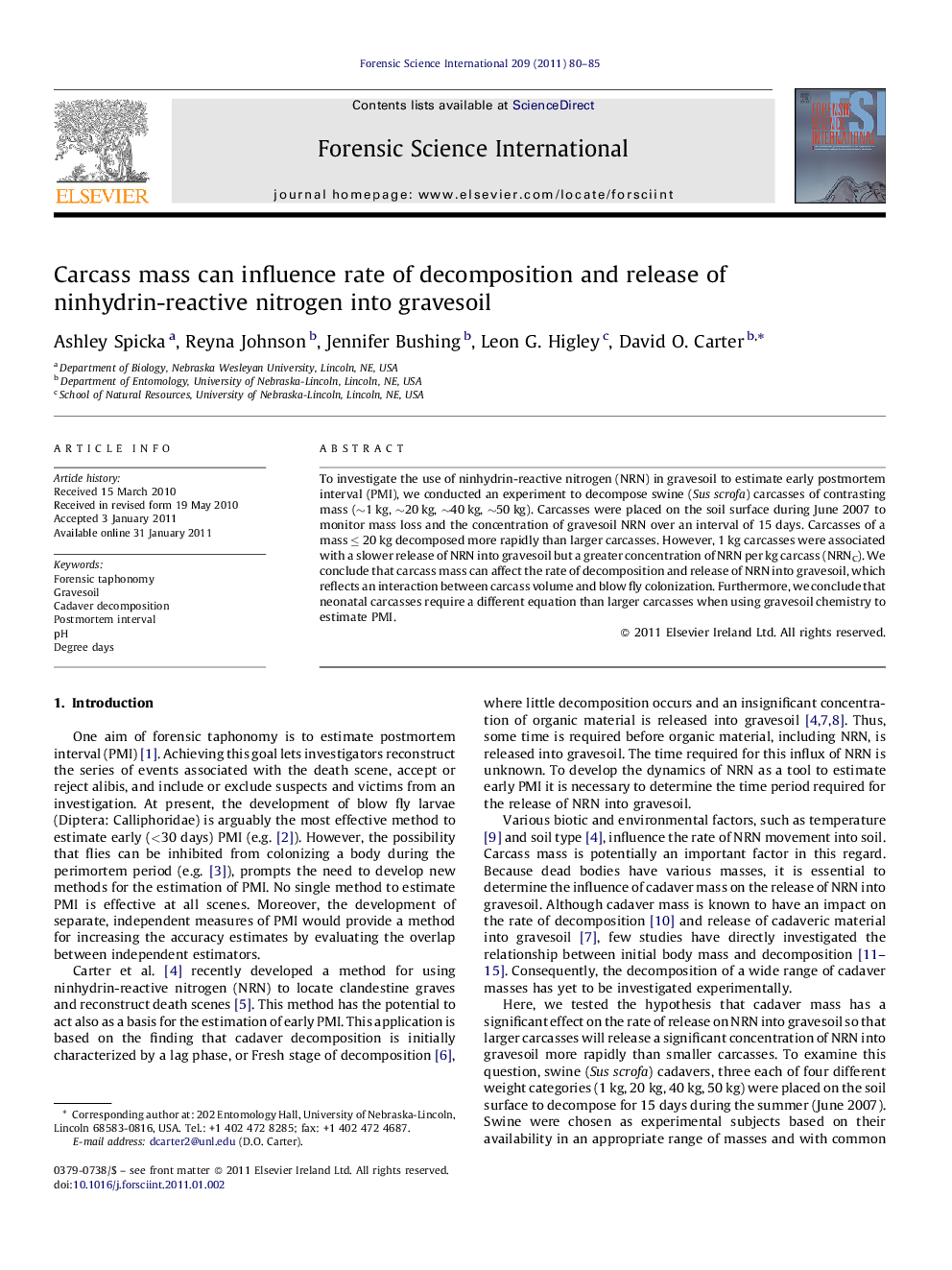| Article ID | Journal | Published Year | Pages | File Type |
|---|---|---|---|---|
| 96784 | Forensic Science International | 2011 | 6 Pages |
To investigate the use of ninhydrin-reactive nitrogen (NRN) in gravesoil to estimate early postmortem interval (PMI), we conducted an experiment to decompose swine (Sus scrofa) carcasses of contrasting mass (∼1 kg, ∼20 kg, ∼40 kg, ∼50 kg). Carcasses were placed on the soil surface during June 2007 to monitor mass loss and the concentration of gravesoil NRN over an interval of 15 days. Carcasses of a mass ≤ 20 kg decomposed more rapidly than larger carcasses. However, 1 kg carcasses were associated with a slower release of NRN into gravesoil but a greater concentration of NRN per kg carcass (NRNC). We conclude that carcass mass can affect the rate of decomposition and release of NRN into gravesoil, which reflects an interaction between carcass volume and blow fly colonization. Furthermore, we conclude that neonatal carcasses require a different equation than larger carcasses when using gravesoil chemistry to estimate PMI.
